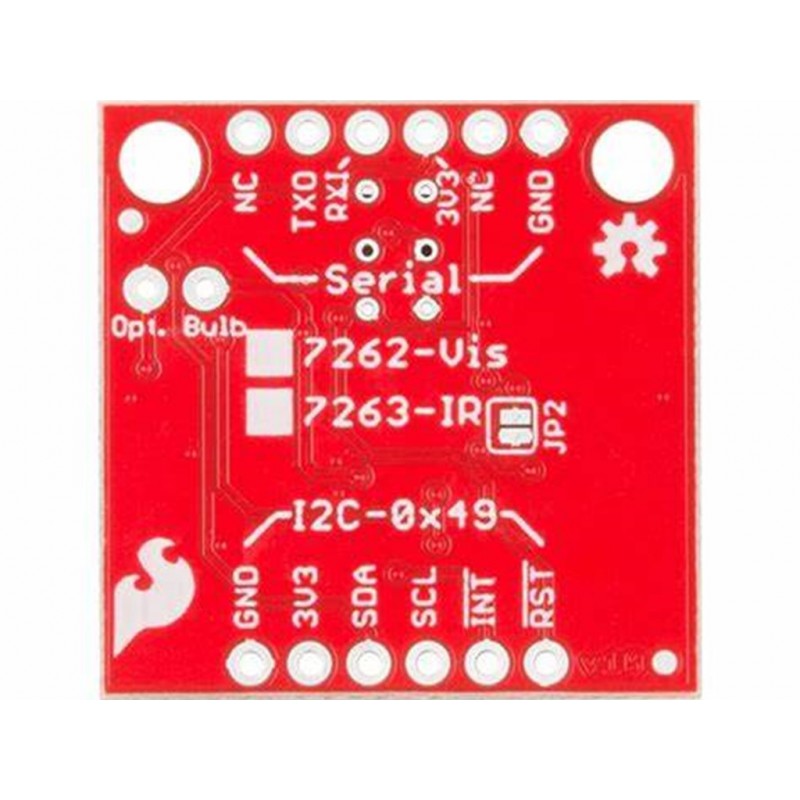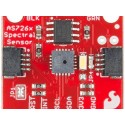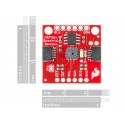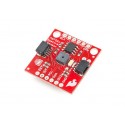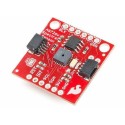Spectral Sensor Breakout Board As7262 Visible
Rs. 2,242.00 Rs. 2,758.00
- Brand: https://ams.com/as7262
- Product Code: SEN-SPECTRAL
- Availability: 2-3 Days
- For Bulk Order
 9962060070
9962060070
SPECIFICATIONS:
-6 visible channels: 450nm, 500nm, 550nm, 570nm, 600nm and 650nm, each with 40nm FWHM
-Visible filter set realized by silicon interference filters
-16-bit ADC with digital access
-Programmable LED drivers
-2.7V to 3.6V with I2C interface
OVERVIEW:
-Digital 6-channel spectrometer (from 450nm to 650nm, each with 40nm FWHM)
-For spectral identification in the visible light wavelengths
-Features a 16-bit ADC with digital access, 2 Qwiic connectors, etc.
-Communicates by both an I2C interface and a serial interface using AT commands
PACKAGE INCLUDES:
1 PCS x Spectral Sensor Breakout Board As7262 Visible
https://ams.com/as7262
/*SOURCE CODE TAKEN FROM BELOW LINK
https://github.com/Phoenix1747/arduino-spectrometer/blob/master/spectrometer/spectrometer.ino
Simple Arduino spectrometer.
Return all data serial CSV formatted and ready to be saved.
Can be used to return relative or absolute values.
*/
#include <AS726X.h>
/* SETTINGS */
const uint16_t INTERVAL = 2000; //measurement interval in ms
const bool REL_VALUES = true; //true returns relative values, false absolute values
const bool DRV_LED = true; //turn on (true) / off (false) the driver LED
const bool MEASURE_TEMP = true; //additionally log sensor temperature
AS726X ams; //create ams library object
void setup(){
pinMode(LED_BUILTIN, OUTPUT); // initialize digital pin LED_BUILTIN as an output.
Serial.begin(57600); //start fast Serial
if(!ams.begin()){ //begin and make sure we can talk to the sensor
Serial.println("Error, no sensor!");
while(true);
}
// 0,1,2,3 -> 1,2,4,8 mA
ams.setIndicatorCurrent(0); //set current for indicator LED 1mA
ams.enableIndicator(); //turn on indicator LED
//0,1,2,3 -> 12.5,25,50,100 mA
ams.setBulbCurrent(0); //set driver bulb current to lowest
//control the driver led
if(DRV_LED){
ams.enableBulb();
}else{
ams.disableBulb();
}
// 0,1,2,3 -> VBGY, GYOR, all, One-Shot all
ams.setMeasurementMode(2); //continuous reading of all channels
ams.setGain(3); //0,1,2,3 -> 1x,3.7x,16x,64x
ams.setIntegrationTime(50); //actual integration time will be time*2.8ms
}
void loop()
{
String temperature;
if (MEASURE_TEMP)
{
uint8_t temp = ams.getTemperature() + 273.15; //get sensor temperature in Kelvin
temperature = String(temp);
}
ams.takeMeasurements(); //takeMeasurementsWithBulb();
const uint8_t array_size = 6;
float calibratedValues[array_size]; //this will hold all (6) the channel data
calibratedValues[0] = ams.getCalibratedViolet();
calibratedValues[1] = ams.getCalibratedBlue();
calibratedValues[2] = ams.getCalibratedGreen();
calibratedValues[3] = ams.getCalibratedYellow();
calibratedValues[4] = ams.getCalibratedOrange();
calibratedValues[5] = ams.getCalibratedRed();
if(REL_VALUES){
float sum_value = 0;
for(uint8_t i=0; i<array_size; i++){ //add all the channel values
sum_value += calibratedValues[i];
}
for(uint8_t i=0; i<array_size; i++){ //compute the ratio of every channel
calibratedValues[i] /= sum_value;
}
}
// VBGYOR
for (uint8_t i=0; i<array_size; i++){
Serial.print(String(calibratedValues[i]));
//add comma and blank after every value except the last one
if (i < array_size-1 || MEASURE_TEMP)
{
Serial.print(",");
}
}
Serial.print(temperature);
Serial.println();
delay(INTERVAL);
}
15 DAYS

